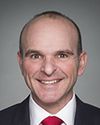Thank you for having me. I am honoured to be here.
The Canada Council for the Arts has had the enormous privilege of seeing its budget sharply increased. It is important for us to answer questions from parliamentarians, artists and the public on what we do with that money.
By way of introduction, I would point out that the council has undergone a radical transformation since 2015. That major change began in 2015, when I became director of the council. Since I had previously been its vice-chair for 10 years, I was already familiar with the organization.
The purpose of that transformation was essentially to simplify programs and to ensure the council provided more support to artists in accordance with their wishes based on different, more future-oriented business models. Here are a few figures to illustrate the scope of the change. When I became director, the council was managing roughly 150 programs. Today we have 6. The duties of approximately 70% of the council's employees have been changed to enable them to work differently, to act differently and to expand the council's influence in the arts community.
Then in 2016 we released a strategic plan. The title is “Shaping a New Future: Strategic Plan 2016-2021”, and there were four big commitments in that strategy plan.
The first one was that we would increase our support to artists, collectives and organizations striving for artistic excellence and greater engagement in the arts by an increasingly diverse public.
The second commitment we made was that we would amplify the quality, scale and sharing of Canadian art through digital technology.
The third one was that we would invest to renew the relationship between indigenous artists and indigenous and non-indigenous audiences for a shared future.
Finally, the fourth big commitment we made at that time was that we would raise the international profile of Canadians art and artists.
Each of these commitments was supported by very specific targets in order to make it happen.
On March 22, 2016, the Government of Canada decided to double the council's budget over five years. That resulted in an additional appropriation of approximately $550 million to 2021, slightly more than half a billion dollars, in the arts sector. An investment of that scale has never happened in the council's history. We have very clearly announced our financial intentions to the community and to the Canadian public.
The first thing we wanted to achieve was to modify the distribution of funds. Before the doubling of the budget, in every year there was a high proportion of our funds that was locked into ongoing operating grants, and there was very little flexibility and less and less flexibility at every level of the system—both at the municipal level and the provincial level—to accommodate projects and to open the doors and the windows to diversity.
There was a sense that things were not moving a lot and that the Canadian art system would less and less reflect the society that supports it, so we wanted to make sure that we would bring more flexibility into the system with the new money and that we would move the needle from roughly 67% going to core funding to 50-50, and we are already almost there.
We also made the announcement that we would take a portion of the new money, meaning $88.5 million, to create a very important digital strategy fund in order to help the art sector to transition, to adapt, to cope with the digital possibilities and capacities that we have in Canada and worldwide.
We also made the commitment that we would triple the investment to support indigenous creation, and not only augment the investment but rethink and reframe the way we do the support to make sure that it will be done less from a Eurocentric perspective and more according to indigenous world views with a program that is completely administered by a staff of indigenous descent and indigenous peers.
Finally, we made the commitment that we would double, over five years, the investments of the Canada Council for access to international markets.
We also made a very significant commitment that 88.5% of all the new money that the Canada Council receives will go directly to artists and arts organizations. That was a very bold commitment, because it meant that the bulk of the money would not serve to develop more bureaucratic capacities but go directly into the sector.
As of last month, the council had received, so far, $225 million, or 41% of all the new money I mentioned, the $550 million. As of today, in the arts system in Canada, $202 million, or 90% of the money we received, has been directly invested and distributed across Canada for artistic groups and arts organizations and to support projects. It's a big change. It's a big revolution in terms of the arts system.
It's clear that one of the difficulties with an announcement such as this one is that it generates a lot of expectations. First, most of the artists who heard that the budget was doubled thought it was happening overnight, not over five years. There were a lot of needs expressed and there were, again, a lot of expectations. Some of them were unrealistic, but our duty and our responsibility is to deal with all of those expectations calmly, with empathy and understanding, and to explain the choices we made. It's clear that it was impossible for the Canada Council to make decisions in terms of augmenting the support for indigenous creation. Reinvesting in diversity, we made the commitment that 25% of all the new money we would get would go to first-time recipients. It was impossible to make all those commitments, and at the same time satisfy the expectations of everybody across Canada. We would have needed billions of dollars to do that.
What is really important is that we made choices, and I can say now that we made very strong inroads in terms of reconciliation, in terms of creating new possibilities for our Canadian artists and arts organizations on the world stage, in terms of growing and consolidating what I could call the independent artistic scene across Canada, and in terms of inviting and supporting new artists and new voices across Canada.
One of the unrealistic expectations currently under considerable discussion is the regional distribution of council funding.
As a federal funding agency, the Canada Council for the Arts invests in provincial, municipal and local ecosystems that are highly diversified in the funding they receive, the size of organizations in those ecosystems and their funding history.
Every time we invest in Canada, we are aware that it is in very different contexts across the country, and contexts that are ever-changing, because the Canada Council represents only one portion of all the public money invested, and the level of investment and the way the cultural ecosystem works is very different from one province to another.
What we are trying to do, in fact, is not to come to a point where we would create a system in which public funding would be equal in every province in Canada. It's impossible to achieve—







